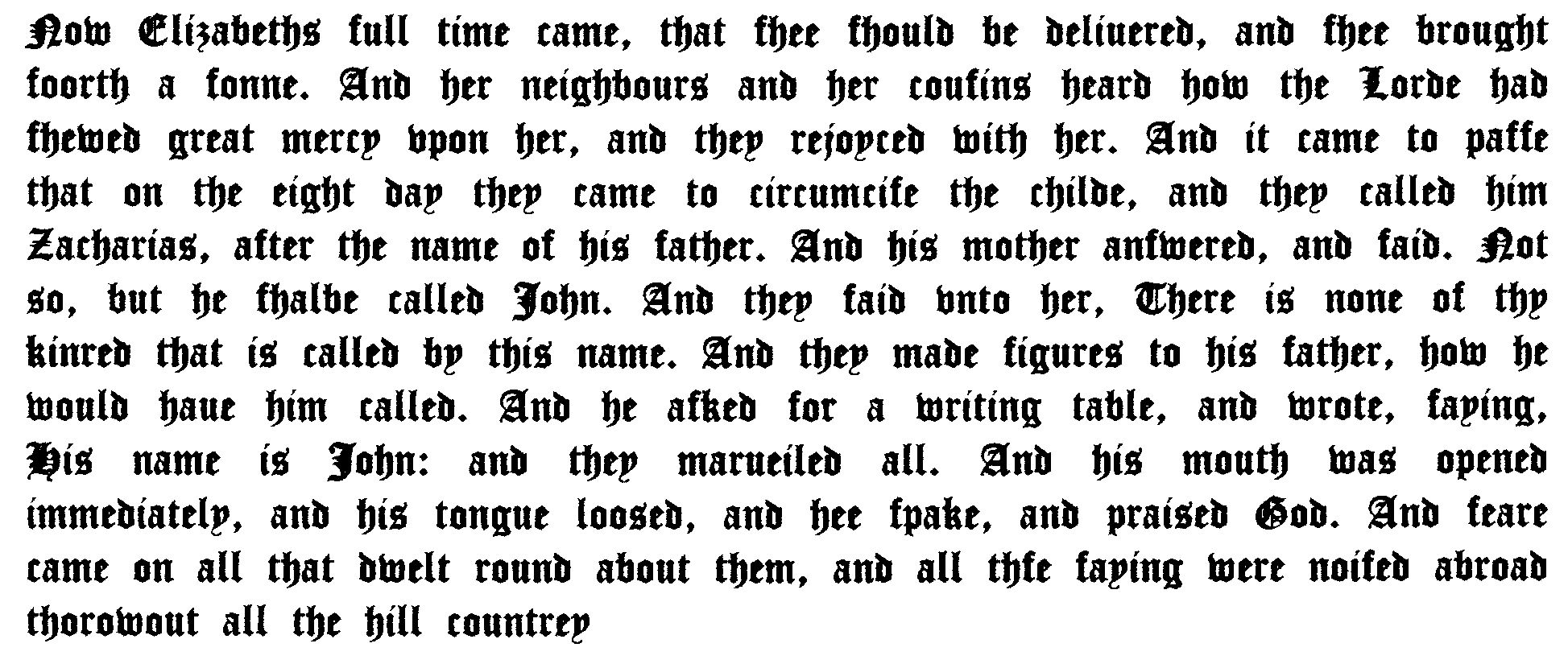|
HOUSMAIL HM117 9 September 2004 WHICH KING JAMES BIBLE? Do you know which version of the King James Bible (KJV) you are reading? Did you know there is more than one? Did you know that the current version is not exactly the same as the original 1611 editions? The KJV was first printed in 1611. There were three editions in that year, each with their own unique printers errors. There were significant revisions in 1613, 1629, 1638, 1644, 1664, 1701, 1744, 1762, 1769, and 1873. I have read articles which claim that the number of corrections since 1611, may be as high as 100,000! The vast majority of these corrections are revisions of punctuation, capitalisation, and spelling. However there are also many hundreds of changes in words, word order, possessives, singulars for plurals, articles, pronouns, conjunctions, prepositions, entire phrases, and the addition and deletion of words. There have been some quite famous printer’s errors. e.g. * The 1631 edition became known as the "wicked Bible" because of its omission of the word "not" in the 7th commandment! (Exodus 20:14) * A 1653 edition -- known as the "Unrighteous Bible" -- said "the unrighteous shall inherit the kingdom of God." (1 Corinthians 6.9) * A 1718 edition was called the "Vinegar Bible" because the chapter title for Luke 20 was "The Parable of the Vinegar" instead of the "Parable of the Vineyard." * Another edition in 1795 was called the "Murderer’s Bible". It had Jesus saying in Current printings of the King James Bible are based on the Oxford University 1769 edition. DIFFERENCES WITH MODERN TRANSLATIONS You will have noticed that many of the modern translations often differ considerably from the KJV. Of course part of the reason for this is that the KJV is written in archaic 17th century English. Many words and idioms have disappeared from today’s spoken language. Others have changed meaning considerably and are often wrongly understood by modern readers unfamiliar with 17th century English. Modern translators have tried to use English spoken in their own time. Another significant reason for differences between modern translations and the KJV, is that they were not translated from the same Hebrew and Greek texts as the KJV. The Old Testament of the 1611 KJV was translated from the Hebrew texts in the 16th century "Complutensian Polyglot " and " Antwerp Polyglot ". (Polyglots are multi-language versions of the Bible with several different languages arranged in side by side columns.) These were based on Masoretic Hebrew texts dating from the 8th to 10th century. The New Testament was translated from a composite Greek text which we call the "Textus Receptus". It was first compiled by an early 15th century Dutch scholar called Erasmus. Actually it didn’t go by that name when Erasmus first compiled it. The name was coined much later by a publisher in 1633. Erasmus compiled it from only six Greek manuscripts, the oldest of which was from 10th century, For some parts of the work he did not have any Greek texts available. Erasmus solved this problem by making a Greek translation of the missing bits from Jerome’s 4th century Latin Vulgate. Erasmus’ work was revised and republished many times in the 16th Century. Two of these were used by the KJV translators -- one by Stephanus, (1550-1) and the other by Beza. (1598) Since then many earlier Greek manuscripts dating back to the 4th century have been found. Many modern translations are made from a later composite Greek text, which takes into account textual variations found in these documents. In addition to all that, there have been many new discoveries by scholars about the meaning of some Hebrew and Greek words. None of this means that the KJV is not a good translation! It is recognised by Scholars as very good. Nothing in the newer translations has changed the Gospel, or the moral requirements of God’s laws. Those standards are eternal. APPEARANCE The 1611 editions used a Medieval black letter type face for the Scripture text, and a Roman regular typeface for translators notes, and words not in the original, which were added to make the English meaning clear. The Black Letter type has a lower case "s" that looks like our "f", except at the end of a word, where it is "s". It has lower case "v" for both "u" and "v" at the start of a word, and "u" for "u" and "v" everywhere else. By sometime in the 17th century, a change had been made to use Roman typeface everywhere, with added words in italics. The following paragraph from Luke 1:57-65, is presented here in an Old English typeface which is not exactly like the original but is close enough to give some appreciation of the differences between the original Black letter font and the later Roman type face.
Below is the same passage from Luke in a 21st century Roman typeface, which will make for easier comparison with our current editions. Now Elizabeths full time came, that shee should be deliuered, and shee brought (Adapted from "In The Beginning - The Story of the King James Bible" - Alister McGrath - p195) And this is the same passage from a 20th century edition: Now Elisabeth's full time came that she should be delivered; and she brought Allon |
